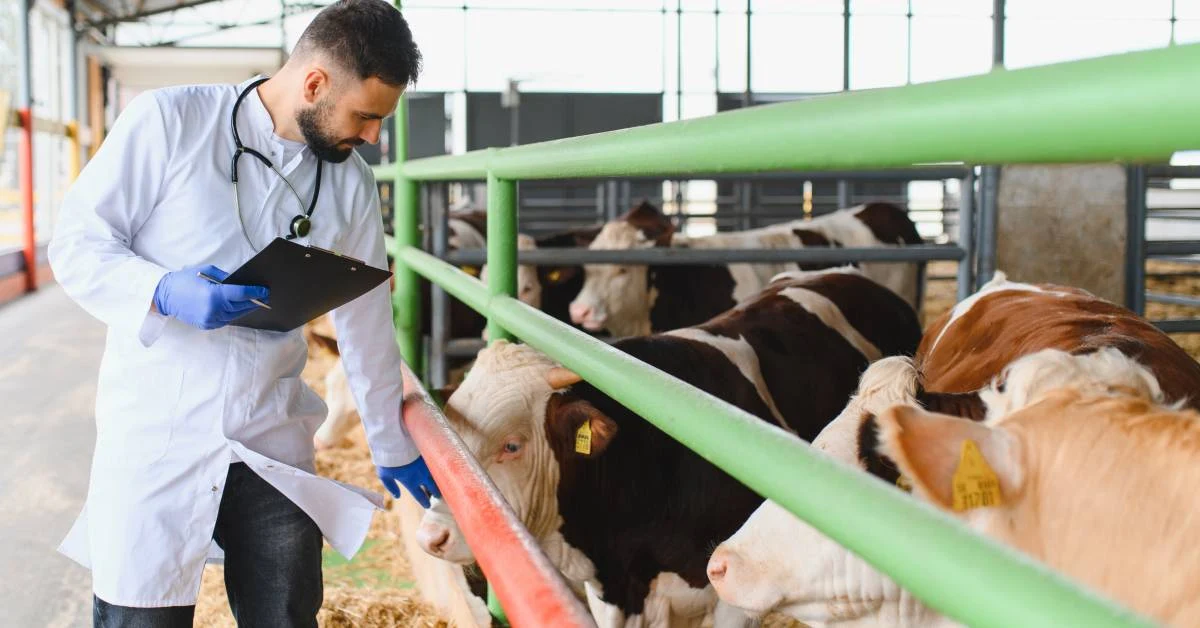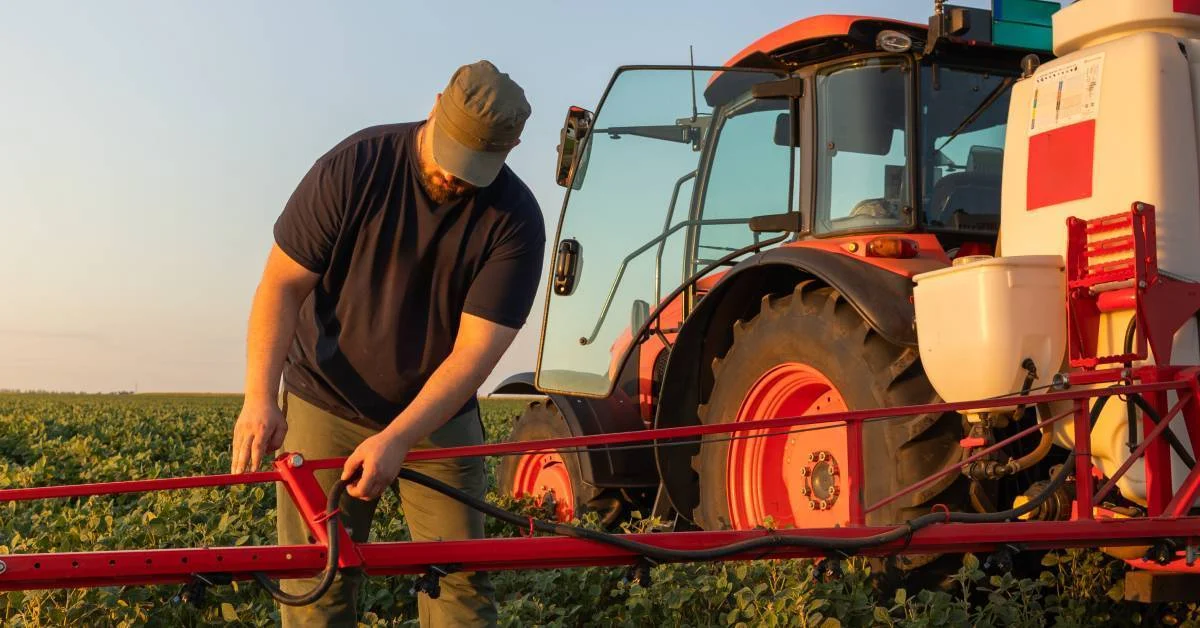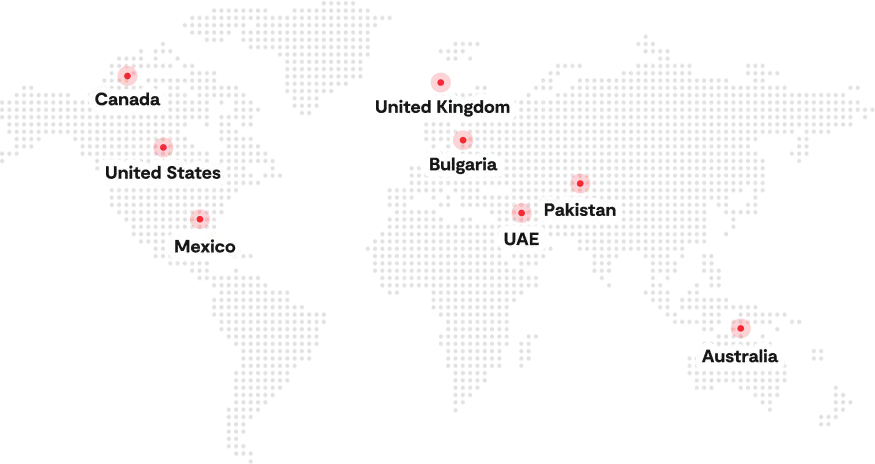The poultry industry is a global food powerhouse, supplying affordable protein to billions. In 2024, world meat output reached roughly 365 million tons, with poultry gains driving the majority of that growth. Meanwhile, the demand is surging worldwide as global poultry consumption is projected to reach about 173 million metric tons by 2034, comprising roughly 62% of all new meat consumed globally.
This momentum means big opportunities for farmers and investors but it also magnifies the challenges in poultry farming. Meeting this demand sustainably is critical for food security and profitability. Producers must contend with disease outbreaks, environmental regulations, labor shortages, and volatile feed costs, any of which can undermine productivity and profits.
Managing these hurdles effectively is crucial to ensuring safe, affordable food for consumers and long-term sustainability as demand grows. Modern poultry management software offers an integrated, data-driven way to monitor flocks, automate tasks, and overcome these poultry farming challenges. Let’s have a look at the challenges to understand the root causes behind them.
9 Biggest Challenges Facing Poultry Farming
The top challenges in poultry farming cover a wide range of issues, from disease outbreaks to regulatory compliance. Understanding these obstacles is the first step to let you maximize poultry management.

1. Disease Outbreaks and Biosecurity Risks
Poultry flocks are highly vulnerable to fast-spreading diseases. For instance, the recent U.S. avian influenza outbreak became the largest in history. Without strict biosecurity and early alerts, infections can quickly sweep through a flock. That means lost birds and income for you. It highlights why robust health monitoring and record-keeping are essential on any modern poultry farm. Even with vaccinations in place, an infection can quickly escalate without constant vigilance.
2. Feed Cost Fluctuations and Inefficient Nutrition Planning
Feed is typically the most considerable expense in poultry production. Corn, soybean meal, and other feed ingredients can swing wildly in price due to weather or market forces. Even small pricing shocks erode profit margins. Without precise nutrition planning, you risk overpaying or underfeeding, undermining flock health and profits. Even minor feed shortages or waste can cut deeply into margins.
3. Low Hatchability and Poor Chick Quality
Every percentage point of hatchability you lose means fewer chicks and wasted feed. Rates can slip due to incubation problems or breeder health, leading to weak chicks and higher early mortality. Many farmers lack detailed hatchery records, so issues often persist unnoticed. The result is unpredictable chick output and extra costs, which can severely cut into your bottom line. For large farms, each percentage point of hatch rate lost can mean thousands fewer chicks.
4. Inefficient Breeding and Production Tracking
Managing breeders and tracking production is complex. For example, following breeder performance and egg output across multiple houses is laborious. Many farms rely on paper records or scattered spreadsheets, so it’s easy to lose track of pedigrees or growth data. This can cause missed culls or wrong pairing decisions. In short, a lack of integrated tracking hampers your ability to optimize breeding and production. In multi-site operations, this disorganization delays responses to issues, making it hard to optimize performance across all houses.
5. Labor Shortages and Human Error
Farms everywhere struggle to find reliable labor as younger generations shy away from manual farm work. When understaffed, essential tasks can be rushed or skipped. Manual record-keeping and data entry are also error-prone: scribbled notes, Excel typos, or forgotten updates happen easily. These mistakes can cascade, for instance, a missed vaccination or overlooked cleaning task can quickly escalate into a bigger problem. Each error or delay from labor gaps hurts efficiency and drives up costs.
6. Data Fragmentation and Lack of Real-Time Insights
Information on a farm can easily become scattered, some in notebooks, some in spreadsheets, some only in workers’ heads. Without a centralized system, you rarely have a complete, up-to-date picture. By the time you notice a problem like a house is running low on feed or a thermostat is off, damage is already done. In short, the lack of real-time data makes proactive management extremely difficult. As a result, management often remains reactive, missing early warning signs that good software could catch immediately.
7. Market Volatility and Poor Forecasting
Commodity prices, consumer demand, and even export markets can swing rapidly. Unpredictable events like disease outbreaks, policy changes, or pandemics can send prices sky-high or crash demand. Without tools to forecast or analyze market trends, it’s hard to plan production or finances. You might raise too few birds in a booming market or have excess inventory when prices tumble. This volatility underscores the need for better planning tools to keep your business stable. For instance, if you raise too many birds ahead of a price crash, you could be left with unsellable inventory.
8. Regulatory Compliance and Traceability Gaps
Food safety and environmental regulations are tightening worldwide. Governments and buyers increasingly require full traceability of poultry products. If your records are patchy, you may struggle to show compliance with regulations on bird health, antibiotic use, or waste disposal. Non-compliance risks fines or losing certifications. For export markets especially, traceability gaps can bar access entirely. Whether it’s antibiotic records, welfare audits, or emissions permits, any paperwork slip-up can incur fines or block exports.
9. Poor Waste Management and Environmental Impact
Each farm produces vast quantities of manure, litter, and other waste. If not appropriately managed, runoff can pollute water, and ammonia can damage air quality and bird health. Neighbors and regulators often pressure farms to control odor and pollution. Inadequate mortality disposal can also pose biohazards. Navigating local disposal regulations and sustainability standards while minimizing odor and waste is an ongoing challenge that impacts both costs and community relations. In fact, regulations on manure storage and runoff are tight, and non-compliance can lead to fines or shutdowns.
How Poultry Management Software Overcomes these Challenges
A modern poultry management software packages bundle multiple modules to address each pain point above. These tools centralize your data and automate routine work so you get real-time insights and control. The right software turns reactive firefighting into proactive management, helping you overcome poultry farming challenges effectively and sustainably.
1. Breeder Management System to Strengthen Flock Health and Biosecurity
A breeder management module in your poultry management software lets you automate vaccination schedules, track mortalities, and monitor flock performance. You can log each vaccination or medication event digitally and compare mortality rates and growth to expected values. If the software sees an unusual mortality spike or drop in feed intake, it triggers an alert immediately. Armed with these analytics, you can isolate affected birds and stop infections before they spread, reducing disease-related losses. For example, if mortality suddenly spikes, the system logs it and alerts you, so you don’t have to catch it on paper. In practice, this means healthier breeder flocks with fewer disease losses.
2. Feed Mill Management System to Optimize Feed Cost and Nutrition
A poultry management software plays a vital role in profitability with its feed mill management module by feed formulation and inventory tracking. You can create precise ratios within the software and adjust them on the fly. Every batch of feed drawn is logged, and total consumption per house is tracked in real time. This detailed monitoring cuts waste and ensures consistent nutrition across the flock. Over time, the system helps you refine recipes and control ingredient costs, maximizing feed efficiency. You can also quickly re-formulate rations or adjust your feed orders when prices change, even testing cheaper ingredient substitutions in the system. The result is stable nutrition and lower feed costs through precision planning.
3. Hatchery Management System to Maximize Hatchability and Chick Health
The hatchery management module ties together every hatch cycle. It monitors egg intake, incubation conditions (temperature, humidity), and hatch outcomes. When you grade or select chicks, you enter that data too. By batch, the software shows you performance metrics, so you can spot trends. For example, if one incubator’s hatch rate dips, you know to inspect it. This continuous feedback lets you tweak incubation recipes and improve chick quality. If a batch underperforms, you can review its entire history in seconds from parent stock data to humidity logs and pinpoint causes. The outcome: optimized hatchability and healthier day-old chicks.
4. Broiler Management System to Automate Production and Growth Tracking
In the broiler module, every bird’s growth becomes part of the data. You regularly input (or use smart scales for) average flock weight, daily gains, feed intake, and mortality. The software analyzes these to compute feed conversion ratios and project harvest weights. If growth lags or mortality rises above a threshold, you get a warning. Predictive analytics can even forecast future yield and profits based on current trends. Some systems can factor in variables like weather or live market prices to adjust projections on the fly. The upshot is precise, automated tracking of production, so you can achieve consistent, optimal broiler yields with fewer surprises.
5. Centralized Labor & Task Management to Reduce Manual Errors
This feature lets you assign and track daily chores through the software’s mobile app. You create jobs like feeding, cleaning, vaccination, etc., and assign them to team members. Workers check off tasks on their smartphones and log the results. The system records each completion, eliminating lost paperwork or forgotten chores. In practice, this saves time and shows you exactly who did what and when, boosting accountability and reducing errors. You can even attach photos or notes to tasks, so if a sick bird is spotted or a maintenance issue is found, the record is clear immediately.
6. IoT-Integrated Analytics to Enable Real-Time Farm Visibility
IoT sensors for temperature, humidity, water, and feed levels feed data directly into the dashboard. You see live conditions in every house at any time. If a sensor detects a problem like a heater failure, the system immediately notifies you. You can then adjust climate controls remotely or send staff to fix it. This real-time farm visibility keeps environmental conditions optimal, so your flocks stay comfortable and productive. For example, the system can track a heat spike and warn you before mortality rises.
7. Accounting & Finance Module to Manage Costs and Market Uncertainty
The integrated finance module ties your farm data to the ledger. Costs for feed, chicks, labor, and equipment automatically flow into the accounting system. You can generate profit/loss statements and expense reports with a click. If market prices fluctuate or budgets overrun, you immediately see the impact. This financial clarity means you make informed decisions and adjust operations proactively when markets shift. You can link each sale or expense to specific houses or batches, so you know exactly which flocks are most profitable and which need attention.
8. Supply Chain & Traceability Module to Ensure Compliance and Transparency
This module tracks every batch from the hatchery to the point of sale. You record identifiers for each hatch or house and log where those birds go. If a buyer or regulator needs proof, you can trace a chicken or egg back through its entire journey. It satisfies food-safety traceability and export requirements automatically. In practice, audits or recalls become manageable – you have transparent records, which keep you compliant and build trust. In a recall scenario, you simply press a button and instantly output all relevant logs instead of digging through old paperwork.
9. Reports and Analytics Dashboard to Empower Sustainable Decisions
All this data feeds into a dashboard of key performance indicators (KPIs). You can monitor metrics like feed conversion ratio, mortality rate, average weight, energy use, and waste output. Custom reports make it easy to share results with others. For example, an investor report might highlight cost per bird and ROI, while a compliance report focuses on resource use and waste. Having these analytics at your fingertips lets you make data-driven decisions that optimize your profit, productivity, and sustainability. You can even export monthly or annual reports for ESG or compliance reviews without extra hassle.
Key Factors to Consider When Selecting Poultry Management Software
Once you understand the value of poultry management software, the next step is finding the one that truly fits your farm. Here are key factors to guide your choice:
1. Farm Size and Complexity
Start by assessing your farm’s size and operational depth. Smaller farms benefit from cost-effective software with core features like flock health tracking, feed scheduling, and record management. Larger, multi-site farms need advanced solutions with analytics, predictive health alerts, breeding program optimization, and integration with IoT devices to manage complexity efficiently.
2. Type of Poultry Raised
The software should align with the type of poultry you manage. Layers, broilers, breeders, or mixed flocks all have unique needs. Layer farms need egg-production tracking and layer health analytics, while broiler operations rely on growth rate monitoring, feed conversion ratio optimization, and precise harvesting schedules. Select software that can adapt to these operational variations.
3. Balancing Costs and Benefits (Budget and ROI)
Investment decisions must go beyond the license cost. Evaluate implementation, employee training, and ongoing support. Estimate ROI by factoring in labor savings, reduced losses from disease or inefficiency, and productivity gains through data-driven management. The best software will be profitable for itself through improved resource allocation and real-time oversight.
4. Features and Functionality
Compare offerings from multiple vendors and match features to your operational needs. Look for modules covering flock health, biosecurity, feed and hatchery management, reporting, and inventory control. Prioritize flexibility, scalability, and data-driven automation that supports long-term growth.
5. Integration with Existing Systems
If you already use equipment or IoT tools, ensure the new software integrates seamlessly. Compatibility minimizes disruptions and allows real-time data flow across feeding systems, environmental sensors, and financial tools. This streamlines operations and simplifies reporting.
6. Ease of Use and Training
Ease of use is crucial, especially for teams with limited technical experience. Choose software with an intuitive interface, guided workflows, and accessible dashboards. Partner with providers who offer onboarding, training, and ongoing support so your team can use the system confidently and effectively.

Overcome the Poultry Farming Challenges with Folio3’s Poultry Management Software
Folio3 brings over 20 years of AgTech expertise and innovative solutions to poultry farms worldwide. Our robust, user-friendly poultry farm management software integrates all these scalable, fully-featured modules to boost your farm’s efficiency, traceability, reliability, sustainability, and profitability. Ready to transform your operations? Book a demo or request a consultation today!
FAQs
What is the Use of AI in Poultry?
In the poultry industry, AI technologies such as drones can monitor and track the health of poultry flocks. Similarly, AI-powered sensors can be installed in poultry houses to collect and analyze data on temperature, humidity, and air quality, which can help farmers optimize the environment for their birds.
What is Smart Poultry Farming?
Smart poultry farming is the use of advanced technologies such as AI, IoT devices, and data analytics to optimize poultry farm operations. It can lead to more efficient resource management and improved productivity and profitability for the business.
What is the Price of Poultry Software?
The price of poultry software varies depending on the provider, the features offered, and the farm size. Some providers may charge a one-time fee for purchasing the software, while others provide subscription-based pricing.
Why Is Data-Driven Management Important in Poultry Farming?
Data-driven management enables real-time visibility into bird health, feed efficiency, and production cycles. With analytics from poultry management software, farmers can make smarter decisions that boost profitability and sustainability.
Is Poultry Management Software Suitable for Small Farms?
Yes. Many poultry farm management software solutions are scalable and customizable. Small farms can start with essential modules and upgrade as operations grow, ensuring affordability and efficiency.
How Can I Implement Poultry Management Software in My Farm?
Start by evaluating your farm’s size, type of poultry, and existing systems. You can choose a software provider that offers training, customization, and integration support. A guided implementation ensures smooth adoption and faster results.







